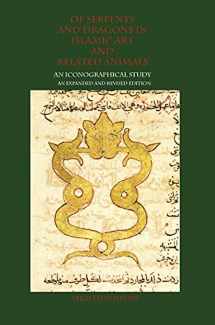
Of Serpents and Dragons in Islamic Art and Related Animals: An Iconographical Study (New and Revised Edition)
Book details
Summary
Description
In the medieval Muslim world, the dragon was the most frequently represented fabulous beast. This applied across styles and media and in both sacred and secular contexts. Yet its prominence is marked by seemingly contradictory representations. Like Plato’s \x26#34;Pharmakon,\x26#34; the dragon was imbued with antithetical meanings: as it stood for both the darkness of the eclipse and the light of God, the satanic and the divine, the transcendent and the earthly. The \x26#34;yin\x26#34; and the \x26#34;yang\x26#34; of Islam were embodied in the dragon, whose fire was the hell of destruction and also the blessed light of the divine. The dragon thus represented one of those exceptional and mysterious symbols that explained the more baffling phenomena such as creation, chaos and order, furthermore signifying amalgamations of dichotomous forces whose balance made life and the understanding of life possible.
Through rigorous and extensive research of historical, literary and exegetical sources, Daneshvari explores the dual symbolism of this intriguing central motif of Islamic iconography. Research to date has focused on the dark side of this mythical creature, as an eclipse monster, but here, \x26#34;Of Serpents and Dragons in Islamic Art,\x26#34; seeks to re\-balance this. Representations of dragons on mosques and other holy structures, gateways to cities, the thrones of rulers, the wings of angels and candleholders are perplexing if the dragon is viewed only as a threatening or demonic icon. Daneshvari solves this puzzle by arguing that the dragon’s primary meaning is as a producer and a symbol of light and protection.
He further investigates the astrocosmological significance of dragon\x27s iconography, its diverse hybrid appearances and the double\-edged metaphor of opium that represented both the dragon and the only cure to its fiery bite. Identifying the dragon as signifier of the navel of the Earth, or the place of God’s creation, it also resolves one of its most mystifying representations – flanking the enthroned ruler. This book is a ground\-breaking and original contribution and essential reading for scholars and researchers of Islamic and Art History. [PLEASE NOTE: Hardcover is out of print. Please order this softcover edition.]


We would LOVE it if you could help us and other readers by reviewing the book
Book review



